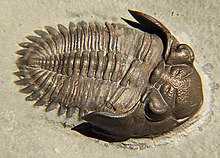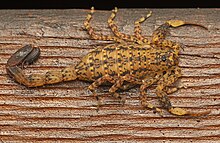
Agnostida are an order of extinct arthropods which have classically been seen as a group of highly modified trilobites, though some recent research has doubted this placement. Regardless, they appear to be close relatives as part of the Artiopoda. They are present in the Lower Cambrian fossil record along with trilobites from the Redlichiida, Corynexochida, and Ptychopariida orders, and were highly diverse throughout the Cambrian. Agnostidan diversity severely declined during the Cambrian-Ordovician transition, and the last agnostidans went extinct in the Late Ordovician.

Trilobites are extinct marine arthropods that form the class Trilobita. Trilobites form one of the earliest known groups of arthropods. The first appearance of trilobites in the fossil record defines the base of the Atdabanian stage of the Early Cambrian period and they flourished throughout the lower Paleozoic before slipping into a long decline, when, during the Devonian, all trilobite orders except the Proetida died out. The last extant trilobites finally disappeared in the mass extinction at the end of the Permian about 251.9 million years ago. Trilobites were among the most successful of all early animals, existing in oceans for almost 270 million years, with over 22,000 species having been described.

Opabinia regalis is an extinct, stem group arthropod found in the Middle Cambrian Burgess Shale Lagerstätte of British Columbia. Opabinia was a soft-bodied animal, measuring up to 7 cm in body length, and its segmented trunk had flaps along the sides and a fan-shaped tail. The head shows unusual features: five eyes, a mouth under the head and facing backwards, and a clawed proboscis that probably passed food to the mouth. Opabinia probably lived on the seafloor, using the proboscis to seek out small, soft food. Fewer than twenty good specimens have been described; 3 specimens of Opabinia are known from the Greater Phyllopod bed, where they constitute less than 0.1% of the community.

Cheloniellida is a taxon of extinct Paleozoic arthropods. As of 2018, 7 monotypic genera of cheloniellids had been formally described, whose fossils are found in marine strata ranging from Ordovician to Devonian in age. Cheloniellida has a controversial phylogenetic position, with previous studies associated it as either a member or relative of various fossil and extant arthropod taxa. It was later accepted as a member of Vicissicaudata within Artiopoda.

Leanchoilia is a megacheiran arthropod known from Cambrian deposits of the Burgess Shale in Canada and the Chengjiang biota of China.
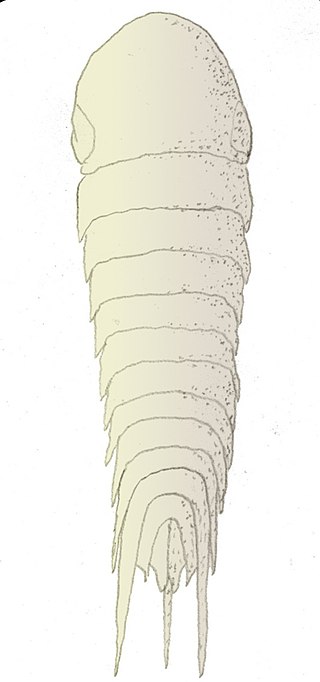
Acanthomeridion is an extinct arthropod found in the Chengjiang fauna deposits of China. In 1997, it was placed in its own, monotypic family, Acanthomeridiidae. It is known from eight specimens, all found in China.

Arthropods are invertebrate animals that are a part of the phylum Arthropoda. They possess an exoskeleton with a cuticle made of chitin, often mineralised with calcium carbonate, a body with differentiated (metameric) segments, and paired jointed appendages. In order to keep growing, they must go through stages of moulting, a process by which they shed their exoskeleton to reveal a new one. They are an extremely diverse group, with up to 10 million species.

Alalcomenaeus is one of the most widespread and longest-surviving arthropod genera of the Early and Middle Cambrian. Known from over 300 specimens in the Burgess Shale and the Chengjiang biota. it is a member of the group Megacheira.
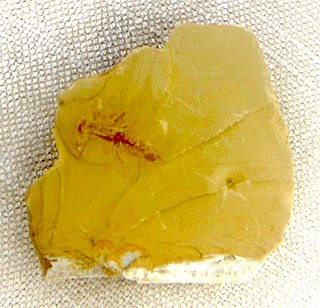
Cindarella is genus of trilobite-like Cambrian arthropod known from the Chengjiang biota of China. It is classified in the stem group of trilobites (Artiopoda) in the clade Xandarellida, along with Phytophilaspis, Sinoburius, and Xandarella.

Vetulicola cuneata is a species of extinct animal from the Early Cambrian Chengjiang biota of China. It was described by Hou Xian-guang in 1987 from the Lower Cambrian Chiungchussu Formation, and became the first animal under an eponymous phylum Vetulicolia.

Phytophilaspis is a phosphatized genus of trilobite-like arthropod with eyes, found in association with algal remains. It dwelt in well-lit, shallow waters.
Lamellipedia is a proposed clade of arthropods, including trilobites and their relatives (Artiopoda) and Marrellomorpha. This relationship is not consistently recovered in phylogenetic analyses.

Crustaceomorpha is a proposed clade of arthropods that includes crustaceans and numerous extinct groups. Synapomorphies for the clade are that the larval antenna is a feeding or locomotory organ, and there are six endopodal podomeres in post-antennal limbs.

The Artiopoda is a grouping of extinct arthropods that includes trilobites and their close relatives. It was erected by Hou and Bergström in 1997 to encompass a wide diversity of arthropods that would traditionally have been assigned to the Trilobitomorpha. Trilobites, in part due to their mineralising exoskeletons, are by far the most diverse and long lived members of the clade, with most records of other members, which lack mineralised exoskeletons, being from Cambrian deposits.

Strabops is a genus of strabopid, an extinct group of arthropods. Strabops is known from a single specimen from the Late Cambrian of the Potosi Dolomite, Missouri, collected by a former professor, Arthur Thacher. It is classified in the family Strabopidae of the monotypic order Strabopida, a group closely related to the aglaspidids with uncertain affinities. The generic name is composed by the Ancient Greek words στραβός, meaning "squinting", and ὄψῐς, meaning "face".

Strabopidae is the only family of the order Strabopida, an extinct group of arthropods known from the Cambrian period.
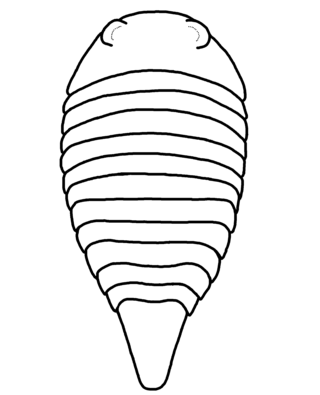
Paleomerus is a genus of strabopid, a group of extinct arthropods. It has been found in deposits from the Cambrian period. It is classified in the family Strabopidae of the monotypic order Strabopida. It contains two species, P. hamiltoni from Sweden and P. makowskii from Poland. The generic name is composed by the Ancient Greek words παλαιός (palaiós), meaning "ancient", and μέρος (méros), meaning "part".

Squamacula is an extinct artiopodan arthropod from the Cambrian Series 2. The type species S. clypeata was described in 1997 from the Chengjiang biota of Yunnan, China. At the time of description there were only two known specimens of S. clypeata, but now there are at least six known specimens. In 2012 a second species S. buckorum was described from the Emu Bay Shale of Australia.
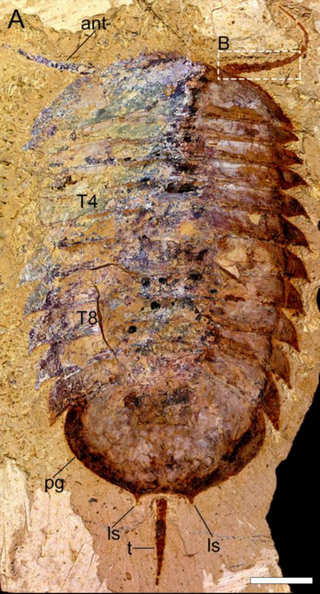
Retifacies abnormalis is an extinct arthropod that lived in the lower Cambrian. Its fossil remains have been found in the Maotianshan Shales of Yunnan, China. It is a member of the Artiopoda, and closely related to Pygmaclypeatus.

Antennulata is a proposed clade of arthropods comprising Artiopoda, Marrellomorpha and Mandibulata. As its name suggests, a proposed unifying feature of the clade is the presence of antennulae. It contrasts with the opposing Arachnomorpha hypothesis, which instead posits that artiopods and marrellomorphs are more closely related to Chelicerates.
